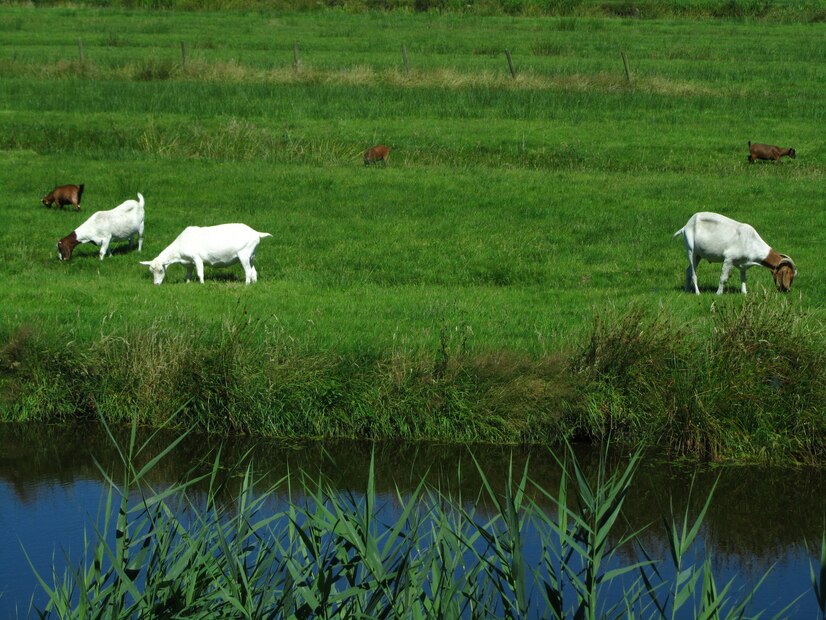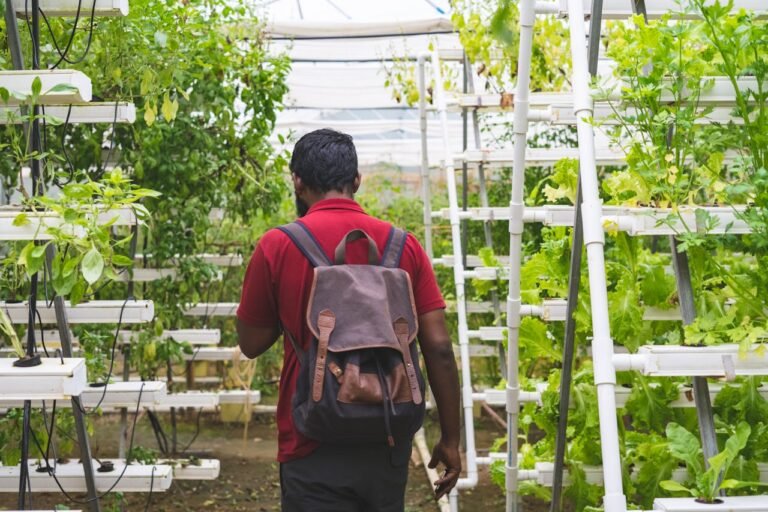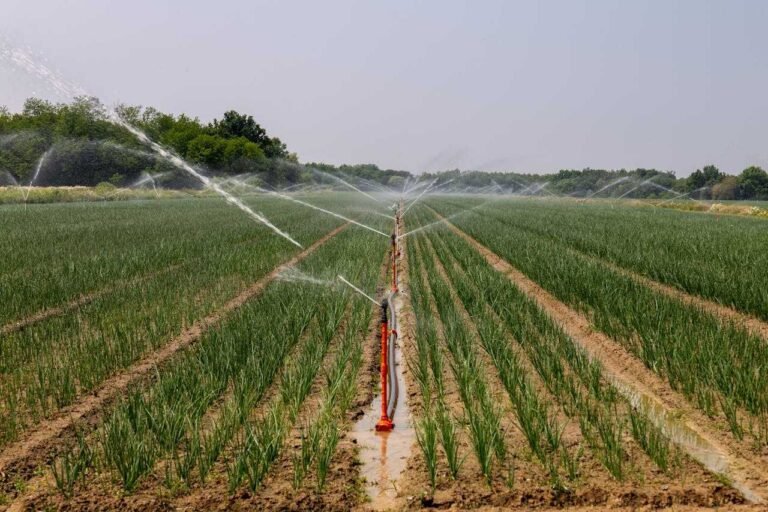What Conditions Characterize Sustainable Grazing Practices?
Growing up surrounded by open fields where animals roamed freely, I saw firsthand how much difference the right grazing practices can make. I remember walking through pastures that were either thriving with tall native grasses or struggling with dry, overgrazed patches. It wasn’t magic—it was the result of adopting thoughtful, sustainable grazing techniques that allowed the land to regenerate naturally.
Today, sustainable grazing isn’t just a nice idea—it’s essential. Our planet faces challenges like climate change, declining soil health, and shrinking biodiversity. What we do on ranches and farms plays a huge role in tackling these issues. By managing pastures thoughtfully and balancing livestock needs with the health of the land, ranchers can help protect the environment while improving their bottom line.
This guide shares lessons learned from real-world experience, combined with insights from experts, research-backed data, and practical advice. Whether you’re a rancher, a farmer, or just someone interested in the future of sustainable agriculture, you’ll find valuable strategies here. We’ll explore key principles of regenerative grazing, real-life success stories, and actionable steps to create healthier landscapes for people, animals, and the planet.

In This Article
- What Is Sustainable Grazing?
- Conditions That Characterise Sustainable Grazing
- Benefits of Sustainable Grazing
- Actionable Advice for Implementing Sustainable Grazing Practices
- Conclusion
What Is Sustainable Grazing?
Sustainable grazing is about raising livestock in a way that keeps pastures healthy while ensuring long-term productivity for farmers and ranchers. At its core, it’s finding a balance between feeding animals and caring for the land. This practice helps build resilience to climate change and even captures carbon in the soil, which benefits the environment.
Imagine a ranch where cows graze peacefully on lush, green pastures. Behind the scenes, the rancher carefully monitors how much grass the animals eat and moves them to different sections of the land to let the plants recover. That’s the essence of sustainable grazing—working with nature instead of exhausting it.
Key Components of Sustainable Grazing
- Forage Management: This means keeping the right number of animals on the land to avoid overgrazing. When there are too many animals, the grass gets depleted, and the soil suffers.
- Rotational Grazing: Picture a checkerboard of pasture paddocks. Livestock are moved from one paddock to another, giving the grass time to regrow. It mimics the natural grazing patterns of wild animals.
- Soil Health: Healthy soil is essential for growing nutritious grass. Sustainable grazing focuses on preventing erosion and boosting soil fertility through methods like minimal tillage and compost application.
- Water Conservation: By placing water points strategically, ranchers can prevent animals from overgrazing near streams and protect precious water sources.
- Biodiversity Preservation: Sustainable grazing goes beyond just feeding livestock. It creates habitats for pollinators and wildlife by encouraging the growth of native plants and flowers.
Conditions That Characterise Sustainable Grazing
1. Optimal Stocking Rates
Maintaining the right number of animals per acre is crucial for preventing overgrazing and maintaining healthy pastures. Overstocking can lead to soil degradation, reduced forage availability, and long-term damage to the ecosystem.
Key Factors to Consider for Stocking Rates:
- Forage Availability: Understand the types and growth rates of grasses on your land.
- Soil Health: Assess soil structure and organic matter to determine how much vegetation the land can support.
- Rainfall Patterns: Monitor seasonal weather to gauge how much forage will naturally grow.
According to a report from the USDA, appropriate stocking rates can improve pasture productivity by up to 40% over time. Calculating the carrying capacity of your land ensures that the balance between livestock and forage remains healthy.
Actionable Tip: Regularly measure forage mass and track rainfall to adjust stocking rates seasonally.
2. Rotational Grazing Systems
Rotational grazing involves dividing the pasture into sections and moving livestock between them. This practice mimics the natural movement of wild herbivores, promoting grass recovery and preventing overgrazing. A publication in Environmental Research Letters (2015) discusses how rotational grazing can improve pasture productivity through enhanced growth and survival of plant species.
Benefits of Rotational Grazing:
- Enhanced Forage Production: Pastures are given time to recover, resulting in more productive and nutritious grass.
- Improved Soil Health: Resting sections of the pasture allow organic matter to build up, improving soil structure.
- Increased Biodiversity: Native grasses and wildflowers often thrive when given time to regenerate.
Expert Insight: Dr. Mark Hebblewhite, Professor in Ungulate Habitat Ecology at the University of Montana, has conducted extensive research on grazing management and its ecological impacts. His findings suggests that rotational grazing is a game-changer for land restoration. By allowing grass to rest and regrow, ranchers can increase forage production and enhance soil carbon storage.
Actionable Tip: Start with simple rotational grazing by dividing your pasture into three or four sections and moving livestock every 7 to 14 days based on forage height.
3. Soil Health Monitoring and Enhancement
Healthy soil is essential for productive grazing lands. It supports plant growth, retains moisture, and stores carbon. Grazing practices that compact the soil or cause erosion can reduce pasture productivity.
Indicators of Healthy Soil:
- High Organic Matter: Dark, crumbly soil indicates a good level of organic material.
- Presence of Earthworms and Soil Microbes: These organisms are signs of a thriving soil ecosystem.
- Good Water Infiltration Rates: Healthy soil absorbs water efficiently, reducing runoff.
Actionable Tip: Conduct regular soil tests to monitor pH levels, organic matter, and microbial activity. Amend the soil as necessary with compost or cover crops.
4. Native Vegetation Preservation
Preserving native grasses and plants contributes to a more resilient ecosystem. Native vegetation is often better adapted to local climate conditions, making it more drought-resistant and less prone to disease.
Benefits of Native Vegetation:
- Reduced Erosion: Native plants have deep root systems that help hold soil in place.
- Enhanced Biodiversity: Native plants provide habitat and food sources for pollinators and wildlife.
- Better Water Retention: Deep roots improve the land’s ability to retain water.
Case Studies: In Texas, the Krause family ranch transitioned from monoculture pastures to native grasslands. After five years, they reported a 30% increase in forage yield and a significant reduction in weed growth.
Another notable example of a ranch successfully transitioning from monoculture pastures to native grasslands is the Bench Ranch in Montana. Over 36 years, the ranch implemented holistic grazing management practices, leading to significant improvements in soil health and vegetation. By documenting changes through photo points and maintaining accurate records of livestock data, they observed positive trends in forage production and a reduction in undesirable plant species. For instance, areas that were once dominated by sagebrush transformed into pastures with increased tall grass species like Green Needlegrass, resulting in enhanced forage availability for their cattle.
Actionable Tip: Work with local extension services to identify native plant species suitable for your area and reseed depleted pastures.
5. Effective Water Management
Strategic water placement and protection of riparian zones are essential for reducing erosion and maintaining clean water sources.
Water Management Strategies:
| Strategy | Benefits |
|---|---|
| Installation of solar-powered pumps | Reduced dependence on natural water sources |
| Buffer zones around streams | Improved water quality and wildlife habitat |
| Rainwater harvesting systems | Enhanced water availability during droughts |
Research Insight: A study published in the Journal of Rangeland Ecology found that ranches with well-managed water systems had 25% higher forage productivity and lower erosion rates compared to those without.
Actionable Tip: Install solar-powered water pumps and create buffer zones around water sources to protect them from livestock trampling.
6. Biodiversity Conservation
Biodiversity plays a critical role in maintaining ecosystem resilience. Diverse plant and animal species create a balanced and stable environment.
Strategies to Enhance Biodiversity:
- Encourage Native Plant Growth: Allow time for wildflowers and native grasses to regenerate.
- Minimise Chemical Use: Avoid pesticides and fertilisers that harm beneficial insects and microorganisms.
- Create Wildlife Corridors: Leave undisturbed areas where wildlife can thrive.
Actionable Tip: Conduct regular biodiversity assessments on your land and document species diversity.
7. Climate Resilience Strategies
With climate change causing unpredictable weather patterns, ranchers must adopt practices that build resilience into their operations.
Practical Tips for Climate Resilience:
- Plant Drought-Resistant Forage Species: These can survive with minimal water and still provide nutritious feed.
- Maintain Tree Cover: Trees provide shade for livestock, reduce wind erosion, and sequester carbon.
- Use Cover Crops: Plant cover crops during the off-season to protect soil from erosion and add organic matter.
Actionable Tip: Diversify forage species to include drought-resistant varieties and maintain tree cover to mitigate temperature extremes.
Learn More: Top 5 Sustainable Ranching Practices to Reduce Environmental Impact and Boost Profitability
Benefits of Sustainable Grazing
1. Healthier Soil, Stronger Pastures: One of the biggest wins of sustainable grazing is the improvement in soil health. When livestock are rotated between different pastures, the grass gets time to recover. This cycle helps the soil maintain essential nutrients, reduces erosion, and increases organic matter. Healthier soil, in turn, supports stronger and more nutritious pastures.
2. More Forage, Less Stress: With healthy soil comes healthier grass. Sustainable grazing practices lead to more abundant and higher-quality forage. This means happier animals and less stress for ranchers worrying about pasture shortages.
3. Fighting Climate Change: Believe it or not, sustainable grazing can help fight climate change. Healthy pastures capture and store carbon from the atmosphere—a process called carbon sequestration. According to a 2021 FAO report, grazing systems can store up to 1.5 tons of carbon per hectare annually.
4. Economic Resilience: By focusing on long-term pasture health, ranchers can reduce input costs for feed and fertiliser. Strong pastures mean less dependency on external supplements, ultimately improving profitability.
5. Supporting Biodiversity: Sustainable grazing encourages the growth of diverse plant species, which creates habitats for wildlife and pollinators. This balance fosters a more vibrant and resilient ecosystem.
Proof in Numbers:
| Study | Key Finding |
|---|---|
| University of California, 2020 | Rotational grazing increased forage biomass by 35% |
| USDA Research, 2019 | Sustainable grazing reduced erosion by 40% |
| FAO Report, 2021 | Grazing systems sequestered 1.5 tons of carbon per hectare annually |
Sustainable grazing is a win-win for the planet and the people who care for it. With healthier soil, thriving pastures, and better economic outcomes, it’s a practice worth embracing.
Challenges and Solutions in Sustainable Grazing
Here are some common challenges and practical solutions based on real experiences:
- Initial Costs of Implementation: Setting up a rotational grazing system or investing in water-saving technologies requires upfront expenses. This can be discouraging for small-scale ranchers.
- Solution: Look into government grants or conservation programs. Many organisations offer financial assistance for projects that promote soil health and water conservation. Don’t be afraid to ask around and apply for multiple programs.
- Lack of Knowledge and Training: It’s easy to feel lost when you don’t know where to start.
- Solution: Attend workshops, connect with local agricultural cooperatives, and consult extension agents who are experts in sustainable land management. Online courses can also be a great resource.
- Resistance to Change: Trying something new often meets scepticism from family members or employees.
- Solution: Start small. Implement a pilot project on one part of your land and track the results. Success often speaks louder than words.
- Climate Variability: Unpredictable weather patterns can throw off grazing schedules.
- Solution: Diversify your forage species to withstand droughts and floods. Implement water-saving technologies to reduce reliance on rainfall.
Learn More: Conservation Vs. Sustainability: What Is the Difference?
Actionable Advice for Implementing Sustainable Grazing Practices
1. Assess Your Land
Before making any changes, take a good look at your land. Walk around, observe what’s thriving and what’s struggling. A soil and vegetation analysis can give you detailed insights. It’s like getting a check-up for your ranch—you need to know what’s under the surface to make the right decisions.
2. Develop a Grazing Plan
A well-thought-out grazing plan is essential. Think of it like meal planning for your family—but for your animals. Rotate your livestock between different paddocks to give pastures time to recover. Monitor forage growth and adjust as needed. Trust me, this simple practice can lead to healthier pastures and happier animals.
3. Optimise Water Resources
Water is life, especially on a ranch. Position your water points strategically to prevent overgrazing near them. Solar-powered pumps and rainwater harvesting systems can be game-changers. Keeping water sources clean and accessible supports both your livestock and the environment.
4. Invest in Soil Health
Healthy soil means healthy pastures. Use compost, plant cover crops, and practice minimal tillage. These steps boost nutrients and help retain moisture. On our ranch, adding compost turned a patchy field into lush grazing land within a couple of seasons.
5. Track Progress
Keep a journal—yes, an old-fashioned one or a digital app. Note pasture health, livestock weight, and weather patterns. These records help you spot trends and make informed decisions.
Conclusion
Sustainable grazing is more than just a checklist—it’s a commitment to caring for the land. When you nurture the earth, it gives back tenfold. By making thoughtful choices today, we ensure a thriving, resilient ecosystem for future generations. And that, I believe, is a legacy worth leaving.







